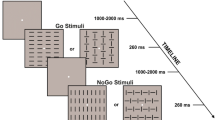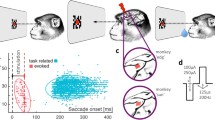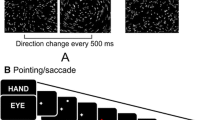Abstract
In neurophysiological studies, functional magnetic resonance imaging (fMRI) is most commonly used to map brain functions by locating areas of increased activity while executing various tests. At the same time, less attention is traditionally paid to a concomitant decrease in metabolism in other brain areas despite a comparable intensity of these processes. The cause for such a decrease in local brain activity, as well as its dynamics and the dependence of localization on experimental conditions, are currently in question. The aim of this work was to study the interaction between brain regions that demonstrate bidirectional changes in the level of oxygen consumption in response to the simplest stimuli, flashes of light. The study was carried out on three awake Macaca mulatta monkeys, in which activity distribution maps were compared during aperiodic light stimulation and in total darkness. Flashes of light evoked an increase in oxygen consumption in the primary visual cortex and a simultaneous decrease in this indicator in field 7 of the parietal cortex and in area V5 of the middle temporal area. Brain areas that decreased their activity usually did not respond to flickering light stimulation and were not involved in signal processing under conditions of our experiments. The data obtained are interpreted in the light of the hypothesis of an automatic maintenance of a balance between activated and deactivated brain areas, aimed at saving brain energy resources. Presumably, a decrease in activity relative to the background level in unused areas would help compensate for increased energy consumption in other brain areas responsible for signal processing.




Similar content being viewed by others
REFERENCES
Raichle ME, MacLeod AM, Snyder AZ, Powers WJ, Gusnard DA, Shulman GL (2001) A default mode of brain function. Proc Natl Acad Sci USA 98: 676–682.
Jorge J, Figueiredo P, Gruetter R, van der Zwaag W (2018) Mapping and characterization of positive and negative BOLD responses to visual stimulation in multiple brain regions at 7T. Human brain mapping 39(6): 2426–2441. https://doi.org/10.1002/hbm.24012
Laurienti PJ, Burdette JH, Wallace MT, Yen YF, Field AS, Stein BE (2002) Deactivation of sensory-specific cortex by cross-modal stimuli. Journal of cognitive neuroscience 14(3): 420–429. https://doi.org/10.1162/089892902317361930
Maggioni E, Molteni E, Zucca C, Reni G, Cerutti S, Triulzi FM, Arrigoni F, Bianchi AM (2015) Investigation of negative BOLD responses in human brain through NIRS technique. A visual stimulation study. NeuroImage 108: 410–422. https://doi.org/10.1016/j.neuroimage.2014.12.074
Maggioni E, Zucca C, Reni G, Cerutti S, Triulzi FM, Bianchi AM, Arrigoni F (2016) Investigation of the electrophysiological correlates of negative BOLD response during intermittent photic stimulation: An EEG-fMRI study. Human brain mapping 37(6): 2247–2262. https://doi.org/10.1002/hbm.23170
Fracasso A, Gaglianese A, Vansteensel MJ, Aarnoutse EJ, Ramsey NF, Dumoulin SO, Petridou N (2021) FMRI and intra-cranial electrocorticography recordings in the same human subjects reveals negative BOLD signal coupled with silenced neuronal activity. Brain structure & function 227: 1371–1384. https://doi.org/10.1007/s00429-021-02342-4
Smith AT, Williams AL, Singh KD (2004) Negative BOLD in the visual cortex: evidence against blood stealing. Human brain mapping 21(4): 213–220. https://doi.org/10.1002/hbm.20017
Kharauzov AK, Vasil’ev PP, Sokolov AV, Fokin VA, Shelepin YuE (2018) Functional magnetic resonance imaging analysis of the human brain in texture recognition tasks. J Opt Technol 85: 463–467.
Shmuel A, Yacoub E, Pfeuffer J, Van de Moortele PF, Adriany G, Hu X, Ugurbil K (2002) Sustained negative BOLD, blood flow and oxygen consumption response and its coupling to the positive response in the human brain. Neuron 36(6): 1195–1210. https://doi.org/10.1016/s0896-6273(02)01061-9
Harel N, Lee SP, Nagaoka T, Kim DS, Kim SG (2002) Origin of negative blood oxygenation level-dependent fMRI signals. Journal of cerebral blood flow and metabolism: official journal of the International Society of Cerebral Blood Flow and Metabolism 22(8): 908–917. https://doi.org/10.1097/00004647-200208000-00002
Shmuel A, Augath M, Oeltermann A, Logothetis NK (2006) Negative functional MRI response correlates with decreases in neuronal activity in monkey visual area V1. Nature neuroscience 9(4): 569–577. https://doi.org/10.1038/nn1675
Mantini D, Gerits A, Nelissen K, Durand JB, Joly O, Simone L, Sawamura H, Wardak C, Orban GA, Buckner RL, Vanduffel W (2011) Default mode of brain function in monkeys. The Journal of neuroscience: the official journal of the Society for Neuroscience 31(36): 12954–12962. https://doi.org/10.1523/JNEUROSCI.2318-11.2011
Demertzi A, Tagliazucchi E, Dehaene S, Deco G, Barttfeld P, Raimondo F, Martial C, Fernández-Espejo D, Rohaut B, Voss HU, Schiff ND, Owen AM, Laureys S, Naccache L, Sitt JD (2019) Human consciousness is supported by dynamic complex patterns of brain signal coordination. Science advances 5(2): eaat7603. https://doi.org/10.1126/sciadv.aat7603
Barttfeld P, Uhrig L, Sitt JD, Sigman M, Jarraya B, Dehaene S (2015) Signature of consciousness in the dynamics of resting-state brain activity. Proceedings of the National Academy of Sciences of the United States of America 112(3): 887–892. https://doi.org/10.1073/pnas.1418031112
Srihasam K, Sullivan K, Savage T, Livingstone MS (2010) Noninvasive functional MRI in alert monkeys. NeuroImage 51(1): 267–273. https://doi.org/10.1016/j.neuroimage.2010.01.082
Slater H, Milne AE, Wilson B, Muers RS, Balezeau F, Hunter D, Thiele A, Griffiths TD, Petkov CI (2016) Individually customisable non-invasive head immobilisation system for non-human primates with an option for voluntary engagement. Journal of Neuroscience Methods 269: 46–60. https://doi.org/10.1016/j.jneumeth.2016.05.009
Ueda Y, Slabaugh TL, Walker AL, Ontiveros ES, Sosa PM, Reader R, Roberts JA, Stern JA (2019) Heart Rate and Heart Rate Variability of Rhesus Macaques (Macaca mulatta) Affected by Left Ventricular Hypertrophy. Frontiers in veterinary science 6: 1. https://doi.org/10.3389/fvets.2019.00001
Capitanio JP, Mendoza SP, Bentson KL (2004) Personality characteristics and basal cortisol concentrations in adult male rhesus macaques (Macaca mulatta). Psychoneuroendocrinology 29(10): 1300–1308. https://doi.org/10.1016/j.psyneuen.2004.04.001
McLaren DG, Kosmatka KJ, Oakes TR, Kroenke CD, Kohama SG, Matochik JA, Ingram DK, Johnson SC (2009) A population-average MRI-based atlas collection of the rhesus macaque. NeuroImage 45(1): 52–59. https://doi.org/10.1016/j.neuroimage.2008.10.058
Bakker R, Tiesinga P, Kötter R (2015) The Scalable Brain Atlas: Instant Web-Based Access to Public Brain Atlases and Related Content. Neuroinformatics 13(3): 353–366. https://doi.org/10.1007/s12021-014-9258-x
Paxinos G, Huang XF, Toga AW (2000) The rhesus monkey brain in stereotaxic coordinates. Academic Press, San Diego, CA.
Podvigin NF, Makarov FN, Shelepin YE (1986) Elements of the structural and functional organization of the visual-oculomotor system. Monograph. Nauka, Leningrad (In Russ).
Christopoulos VN, Kagan I, Andersen RA (2018) Lateral intraparietal area (LIP) is largely effector-specific in free-choice decisions. Sci Rep 8: 8611. https://doi.org/10.1038/s41598-018-26366-9
Niu M, Impieri D, Rapan L, Funck T, Palomero-Gallagher N, Zilles K (2020) Receptor-driven, multimodal mapping of cortical areas in the macaque monkey intraparietal sulcus. eLife 9: e55979. https://doi.org/10.7554/eLife.55979
Vanni S, Hokkanen H, Werner F, Angelucci A (2020) Anatomy and Physiology of Macaque Visual Cortical Areas V1, V2, and V5/MT: Bases for Biologically Realistic Models. Cerebral cortex 30(6): 3483–3517. https://doi.org/10.1093/cercor/bhz322
Goense J, Bohraus Y, Logothetis NK (2016) fMRI at High Spatial Resolution: Implications for BOLD-Models. Frontiers in computational neuroscience 10: 66. https://doi.org/10.3389/fncom.2016.00066
Hayden BY, Smith DV, Platt ML (2009) Electrophysiological correlates of default-mode processing in macaque posterior cingulate cortex. Proceedings of the National Academy of Sciences of the United States of America 106(14): 5948–5953. https://doi.org/10.1073/pnas.0812035106
Bentley WJ, Li JM, Snyder AZ, Raichle ME, Snyder LH (2016) Oxygen Level and LFP in Task-Positive and Task-Negative Areas: Bridging BOLD fMRI and Electrophysiology. Cerebral cortex 26(1): 346–357. https://doi.org/10.1093/cercor/bhu260
Lin P, Hasson U, Jovicich J, Robinson S (2011) A neuronal basis for task-negative responses in the human brain. Cerebral cortex 21(4): 821–830. https://doi.org/10.1093/cercor/bhq151
Bressler D, Spotswood N, Whitney D (2007) Negative BOLD fMRI response in the visual cortex carries precise stimulus-specific information. PloS One 2(5): e410. https://doi.org/10.1371/journal.pone.0000410
Barth DS, Goldberg N, Brett B, Di S (1995) The spatiotemporal organization of auditory, visual, and auditory–visual evoked potentials in rat cortex. Brain Research 678: 177–190.
Dean P (1990) Sensory cortex: Visual perceptual functions. In: Kolb B, Tees R (Eds) The cerebral cortex of the rat. MIT Press, Cambridge, pp 275–307.
Calvert GA, Campbell R, Brammer MJ (2000) Evidence from functional magnetic resonance imaging of crossmodal binding in the human heteromodal cortex. Current biology : CB 10(11): 649–657. https://doi.org/10.1016/s0960-9822(00)00513-3
Satado N, Pascual-Leone A, Grafman J, Ibanez V, Deiber M-P, Dold G, Hallett M (1996) Activation of the primary visual cortex by Braille reading in blind subjects. Nature 380: 526–528.
Attwell D, Laughlin SB (2001) An energy budget for signaling in the grey matter of the brain. Journal of cerebral blood flow and metabolism : official journal of the International Society of Cerebral Blood Flow and Metabolism 21(10): 1133–1145. https://doi.org/10.1097/00004647-200110000-00001
ACKNOWLEDGMENT
The authors are grateful to I.A. Varovina for technical assistance throughout the project.
Funding
This study was state budget funded, supported by the State Program 47 GP “Scientific and Technological Development of the Russian Federation” (2019–2030), theme no. 0134-2019-0006.
Author information
Authors and Affiliations
Contributions
Experimental design—A.K.H.; data collection—A.K.H., L.E.I., P.P.V., data processing—A.K.H., P.P.V., D.N.P.; writing a manuscript—A.K.H.; editing a manuscript—D.N.P.
Corresponding author
Ethics declarations
CONFLICT OF INTEREST
The authors declare that they have neither evident nor potential conflict of interest associated with the publication of this article.
Additional information
Translated by A. Polyanovsky
Russian Text © The Author(s), 2022, published in Zhurnal Evolyutsionnoi Biokhimii i Fiziologii, 2022, Vol. 58, No. 4, pp. 311–322https://doi.org/10.31857/S0044452922040064.
Rights and permissions
About this article
Cite this article
Harauzov, A.K., Ivanova, L.E., Vasiliev, P.P. et al. fMRI Studies of Opponent Interregional Interactions in the Macaca mulatta Brain. J Evol Biochem Phys 58, 1001–1014 (2022). https://doi.org/10.1134/S0022093022040068
Received:
Revised:
Accepted:
Published:
Issue Date:
DOI: https://doi.org/10.1134/S0022093022040068




